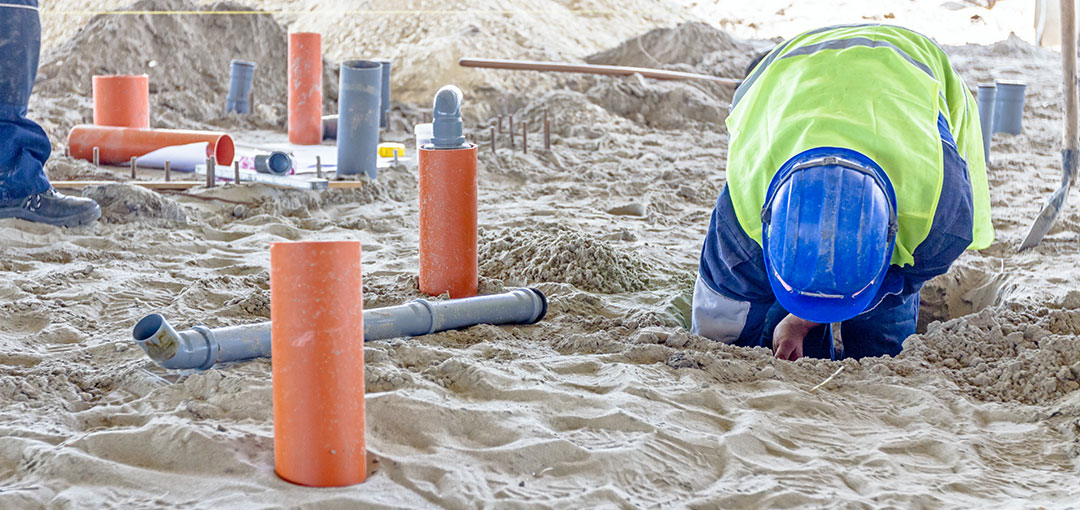OSHA’s New Confined Space Standard For Construction Explained
OSHA’s New Confined Space Standard For Construction Explained
April 5, 2023 |
New confined space regulations have been put into place by OSHA for construction companies in the United States to follow. This new confined space standard for construction is meant to ensure worker safety when employees risk exposure to hazards from contact with dangerous contaminants such as chemicals and dust.
The new standard replaces the previous version, adopted in 1994 and updated several times since then. In 2014, a group of industry professionals teamed up with EHS professionals who developed a comprehensive strategic plan to identify the gaps in safety practices and recommended solutions to address them.
They developed this plan after evaluating available data that showed that workers were at risk when working in confined spaces such as tanks, vessels, silos, and process vessels. The result was the development of a technical proposal that would address these issues and provide recommendations for improvements in compliance with existing standards.
Learn more about what this new confined space standard for construction rule means for your business and how it’s enforced so you can stay up to date on all OSHA regulations.
What Is a Confined Space?
A confined space is a location that has limited entry and exit, contains or may contain air contaminants or gases, and can pose an atmospheric or physical hazard to those entering it. In construction, examples include inside tanks for storing liquids like oil or water; steel pipes; trenches; vaults; underground tunnels; sewers; mineshafts; and silos (for grain storage).
Are There Any Other Types of Confined Spaces?
Yes! The new OSHA standard also applies to locations where employees are exposed to atmospheric hazards such as toxic vapor clouds or gases such as hydrogen sulfide (H2S) or methane gas when removing debris from open pits containing these substances. This could be anything from an abandoned mine shaft filled with toxic chemicals to a collapsed building with high levels of carbon monoxide coming out of broken windows following an earthquake.
If you’re a construction worker and have never been trained in confined space entry, this is the information you need to know about the new OSHA standard.
The new regulations require all employers with employees who enter confined spaces to provide training on performing those tasks safely. The training must be provided before an employee enters any confined space for the first time and must be updated every three years after that. In addition to providing general information about hazards associated with entering confined spaces, employers must also instruct workers on how they should conduct their job-specific hazard assessments so that they can identify any additional risks associated with their particular tasks or locations within a given space (e.g., working near equipment).
Employers are required by law to teach employees how best practices should be implemented on-site and ensure that everyone follows through by providing adequate supervision during work activities involving confined spaces. These include inspections or cleaning up debris left behind by other workers who may have entered recently before them without proper safety precautions being taken beforehand.
Who Does the New Standard Apply to?
The new standard applies to all employers, contractors, and subcontractors who have employees working in confined spaces. It also applies to workers who are not directly employed by the company but working on behalf of an employer or contractor (e.g., subcontractors).
The new standard does not apply if you are an employee of a government agency and your work involves only limited tasks, such as inspecting or repairing equipment located inside a confined space. However, if you work with hazardous materials or toxic chemicals, OSHA’s Hazardous Waste Operations & Emergency Response Standard may apply instead.
What Are the Requirements for Permit-Required Confined Spaces?
The new standard requires all permit-required confined spaces (PRS) to be inspected and evaluated by a competent person before entering. A competent person will be trained to recognize the hazards associated with a particular space and can take steps to eliminate or control those hazards. If you’re working in a PRS, your employer must ensure that:
- You have received training on the dangers of entering confined spaces;
- Your equipment is maintained in good working order;
- You have proper ventilation while inside the confined space; and
- An entry/exit plan has been developed for each PRS before work begins.
How Do I Train Employees on These New Requirements?
The training requirements for this standard are pretty straightforward. You must provide initial training to all employees working in or near confined spaces, then provide refresher training every year. Your company can use any delivery method appropriate for your workforce. Online, classroom-based, or hands-on workshops are all excellent options.
The best way to train is through formal instruction and practical exercises. For example, if you’re going through an OSHA-approved program (and we hope you are!), they’ll teach employees what they need to know before entering a confined space. During an exercise portion of class time, your employees will apply those concepts by performing some exercises themselves under supervision from trainers certified by OSHA as competent instructors in confined space entry procedures.
Conclusion
The new confined space standard for construction is a significant step forward for workers’ safety. The new rule improves upon the previous standard by increasing the frequency of inspections, adding additional requirements to ensure worker awareness and training, and strengthening protections against hazards in all confined spaces. The best part? This new rule applies to ALL construction sites, whether federal or state-funded projects!
